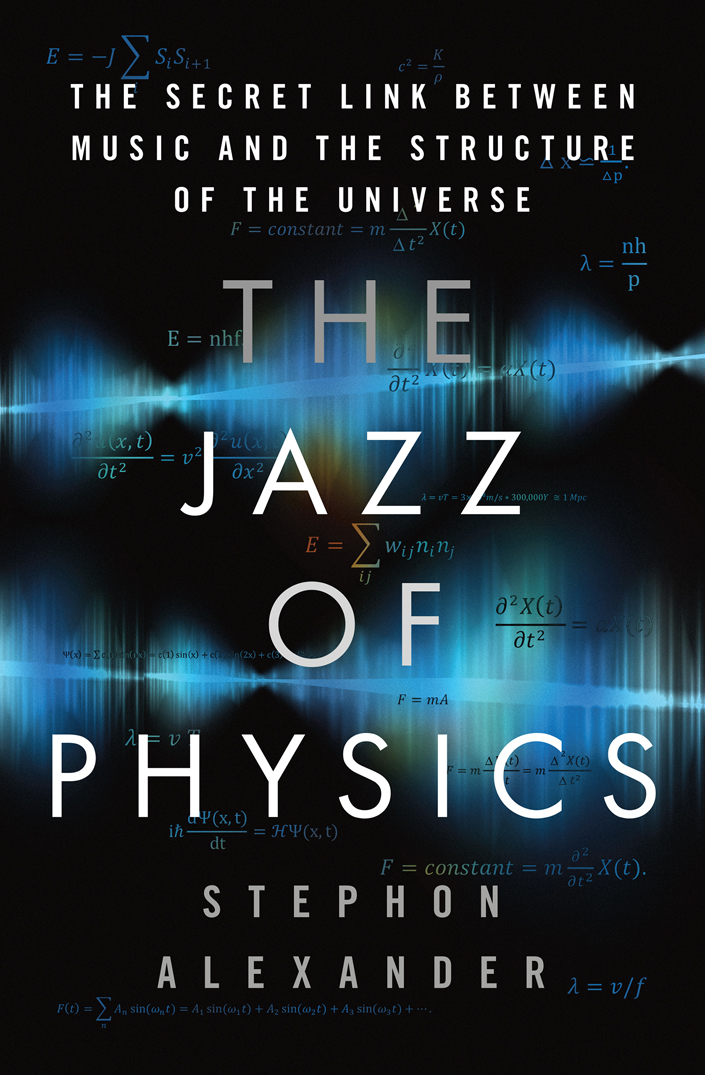
The Jazz of Physics
The Secret Link Between Music and the Structure of the Universe
کتاب های مرتبط
- اطلاعات
- نقد و بررسی
- دیدگاه کاربران
نقد و بررسی

March 21, 2016
Using his own life as the baseline, Alexander, a professor of physics at Brown University, sweetly riffs on deep connections between music and cosmology. Alexander begins with his childhood and youth, during which he discovered his own passions for both physics and jazz. His life story is filled with physics mentors with serious jazz chops as well as encounters with “physics-enthusiast musicians” such as Yusef Lateef, Ornette Coleman, and Brian Eno. Alexander likens theoretical physics to jazz improvisation and discusses the ways that being a jazz musician has benefited his own theories. Those without a background in musicology and cosmology may have difficulty following some of Alexander’s lines of thought, but most of his conclusions are readily grasped. In a key example, he lays out how the structure of the universe arises from a “pattern of vibration,” much like a musical composition. Alexander, the son of a New York cab driver from Trinidad, concludes by sharing his dream that the work of physics, like jazz improvisation, will be enriched by practitioners from many backgrounds. Alexander’s account of his own rise from humble beginnings to produce contributions to both cosmology and jazz is as interesting as the marvelous connections he posits between jazz and physics.

March 1, 2016
Look to jazz greats like John Coltrane for insights into subatomic particles and the history of the cosmos. In this loosely autobiographical meditation, Alexander (Physics/Brown Univ.) explores resonances between music and physics in Pythagoras' "music of the spheres," Albert Einstein's love of music, Coltrane's love of Einstein, and his own ideas as a theoretical physicist and jazz saxophonist. It's a vast, cosmic theme that includes quantum mechanics, superstring theory, the Big Bang, the evolution of galaxies, and the process of scientific theorizing itself. Alexander mines music for analogies to physical reality and credits jam sessions as a method of opening his mind to scientific insights. The comparison between music and physics rests on the fact that sound is a wave with similarities to the wave phenomena that underlie modern physics. That observation sometimes yields illuminating results--e.g., the notion that the early universe contained tiny density fluctuations that looked like 300,000-light-year-long sound waves and eventually clumped into stars and galaxies. Unfortunately, Alexander rarely finds a satisfying middle ground between facile metaphor--"in jazz combos, the 'gravitational' pull comes from the bass and drums"--and obscure arcana. Most of the discussions (and the accompanying diagrams and math equations) are rapturous but murky. Many are too difficult and sketchily explained for laypeople to grasp, whether they are about physics--"D-branes were the objects that carried the Ramond-Ramond charge the same way a point particle (0-brane) carries electric charge"--music theory ("in the key of C, the V is a G-dominant chord and its mirror image/tritone for G is D-flat dominant"), or the effusions of jazzman Sonny Rollins ("I don't want to play the music; I want the music to play me"). Alexander's enthusiasm for his subject is infectious, but that won't help readers fully understand it. A physics-for-poets guide that's more exuberant than enlightening.
COPYRIGHT(2016) Kirkus Reviews, ALL RIGHTS RESERVED.

























دیدگاه کاربران